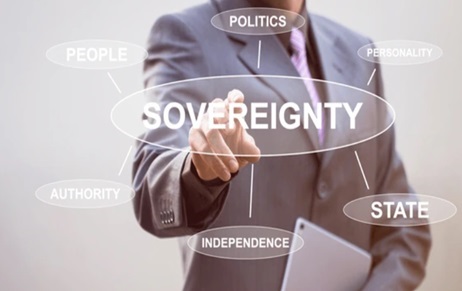Bodin argued that sovereignty is indivisible and absolute and that it should be concentrated in…
Infringement of comic characters- Comic con?
Graphical characters are commercialized in the form of cartoons, posters, food products or merchandises like toys and clothes, to name a few. The profits garnered would depend on the popularity of the brand that the graphical character represents. Exploitation of the graphical character can take place if it is not legally protected.
Intellectual property and unfair competition law mainly provide protection to graphic characters. Due to the overlapping effect that the provisions intellectual property and unfair competition law stipulate, the two laws may converge to cover the gaping holes in the law. An advantage from commercialization of characters is that these graphic characters can be transformed into new works, depicting new postures in various colors and different mannerisms, than that in which the character was originally depicted. It is well known that graphic characters act as entertainment products or services when they are depicted on various merchandises through marketing. Hence, they can be said to be merely suggestive of the products or services for which they are used, but cannot be said to indicate the source of origin.
The best protection strategy is to resort to the comic character being protected by copyright, Trade Mark as well as unfair competition laws.
Comic Characters can be differentiated in two categories: Graphic characters and Fictional characters. Both these categories have different tests to determine whether they can attain copyright protection. A graphic character is one which is depicted by a cartoon or other graphic representation. The physical appearance in the form of characterization is visually seen for the readers. When we come to a fictional character, it is a word portrait where the physical appearance is left to the imagination of the reader. Hence, the difference lies in the pictorial and literary representation.
In the case of Detective Comics v Bruns Publication (111 F 2d 432 (2d Cir, 1940), the defendants had created a character called ‘Wonder-man’ which had the same physical and emotional characteristics of the well-known character ‘Superman’. The Court held that the defendants had copied more than the general types and ideas from ‘Superman’ and also appropriated pictorial and literary details and embodiment in the complaint’s copyright. The Court declined to grant protection to general ideas about a character. It is only when the character is sufficiently portrayed in details, protection could be granted. The character has to be converted from being just an idea, to become an expression.
Walt Disney v Air Pirates (581 F.2d 751 (9th Cir, 1978) was a landmark case on character protection. The defendants had portrayed Disney’s characters in incongruous settings. The Court held that a two step test should be applied to determine copyright infringement. First, the visual similarities of the characters are to be determined and secondly, the court would analyse the personalities of the cartoon characters. In this particular case, the defendants were held liable for copyright infringement.
Looking at Indian perspective, the case of Malayala Manorama v. V T Thomas (AIR 1989 Ker 49) can be seen where the Court allowed Mr. Thomas to carry on with his work of drawing the characters of Toms Boban and Molly even after leaving employment. The publishing house was restricted from claiming copyright over the character and continuing to draw the same character after terminating Mr. Thomas’s employment. The High Court had opined that since V T Thomas had created the character before entering into employment with the publishing house, he is the one who should be allowed to carry on the exploitation of his work even after leaving employment. The publishing house did not play any role in creation of the character, and hence they would not get copyright over the character. Their right is limited only to the extent of the particular cartoon strips which were created by V T Thomas during the course of employment for being published in the newspaper. The Court impliedly distinguished between the drawings made using the cartoon character and the actual cartoon character. The Court deciphered that the copyright over the drawings made using the character would vest with the publishing house as an artistic work, while the copyright over the actual character remains with Mr. Thomas.
With respect to determining copyright-ability of fictional characters, the case of Anderson v. Stallone (11 USP Q 2d 1161) can be referred to wherein the appellant had written the story based on the character of ‘Rocky’, which appeared in the earlier ‘Rocky’ movie series. He then tried selling the same story to Sylvester Stallone for making ‘Rocky IV’. The appellant denied the allegation of infringement and claimed that ‘Rocky’ was not copyright-able. The court ruled in favour of the defendant saying that the physical and emotional characteristics of ‘Rocky’ were set forth in tremendous detail and hence the character was highly delineated.
But in the case, Warner Brothers Pictures v. Columbia Broad-casting Systems (216 F 2d 945), ‘distinctively delineated’ standard was replaced with the ‘story being told’ standard. In the present case, the Court stated that no character is protect-able under copyright law unless the character is extremely well-delineated as to constitute ‘the story being told’ rather than merely being a ‘chess man in the game of telling the story’. This would mean that the story has to be based on the particular character, which is sought to be protected. This was also applied in Universal City Studios v. Kamar Industries (1982 Copyright L Decisions (CCH) 25, 452), where the character ET was held copyright-able because ‘ET’ was the unique and distinctive character about whom the movie was about.
It can be concluded that copyright protection can be granted only when the court is made to believe beyond doubt that the characters are well delineated, and can be conveyed as an expression, and not an idea. It is significant to note that the creator of the comic character should protect his work even before it becomes popular to evade any chances of exploitation of the Trade Mark.
About the Author: Ms. Madhuri Iyer, Trade Mark Attorney at Khurana & Khurana and can be reached at: Madhuri@khuranaandkhurana.com



